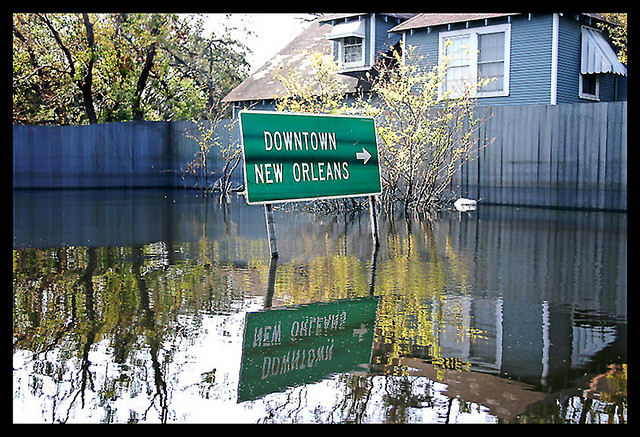Late August 2005, ten years shy of the New Orleans levee system’s expected year of completion, Hurricane Katrina triggered a cascade of events that became a massive disaster across New Orleans and the surrounding Gulf Coast. Katrina didn’t actually hit the city dead-on, and by the time the 17th Street Canal levee failed, releasing the water of Lake Pontchartrain into the 9th Ward and East New Orleans neighborhoods, the storm had already moved inland. Residents that had weathered the storm through the night fell victim to an infrastructure failure that unleashed massive destruction for the city. With more than 50 other breaches over the next two days, more than half of New Orleans metro found itself underwater in flooding that lasted for weeks.
What was the cause of the massive destruction that the residents of New Orleans and the Gulf Coast suffered in 2005? Was it a natural disaster or was it manmade? In senate hearings two years after the storm, the Army Corps of Engineers accepted responsibility for the levee breaches and went on to get the bulk of the blame for the disaster, with the American Society of Civil Engineers calling it the worst engineering catastrophe in US history. Other studies were conducted all pointing to the same faulty engineering as the cause of the breaks and the flooding.
The day before the storm hit, the water rise in Lake Borgne (actually an arm of Gulf water), and in the wetlands outside the levee system, was amplified by high tide being pushed by the storm’s outer bands. Those wetlands had been diminished and exposed by decades of assault on the Louisiana coast line by Army Corps projects that were serving transportation interests on the Mississippi and oil and gas interests in the Gulf. Tumbling dominos of short-sighted and flawed priorities by the Corps began to fall in the face of the storm waters.
In previous storms the levees had held, but in previous storms the combination of wind, water, tide and time had not combined to create an insidious menace to a substandard infrastructure. Katrina fell within forecasts for a 150-year storm—a storm level that most heavily populated American cities would be expected to weather without catastrophic damage—but Katrina delivered a disaster that was far beyond the structural capacity of the New Orleans levee system.
What has happened since? A recent survey by the Public Policy Research Lab at Louisiana State University (and similar studies by the Kaiser Family Foundation and NPR), found that confidence and satisfaction with the reconstruction of the city divides along racial lines. White residents have a relatively positive view of the restoration and black residents do not. These differing views are most likely related to the fact that the hardest hit areas of the city were black neighborhoods, and they have taken much longer to recover.
Organizations like Rebuilding Together New Orleans have partnered with federal and state agencies to aid property owners and rebuild homes and livelihoods. Meanwhile a coalition of local community and conservation advocacy groups calling themselves MRGO Must Go are working to undo decades of poorly planned projects along the Gulf coast and restore wetlands around the Mississippi River Gulf Outlet (MRGO). One of the main initiatives has been outside the city along the coast, where encroaching seawater, disappearing coastal lands, and increasing storm impacts are challenging the resiliency of the region.
These networks and organizations, and many others like them, recognize that restoration is important, but the more critical challenge is building the resiliency needed to live sustainably in the New Orleans basin in the face of environmental changes and weather events that are likely to become more and more powerful.


